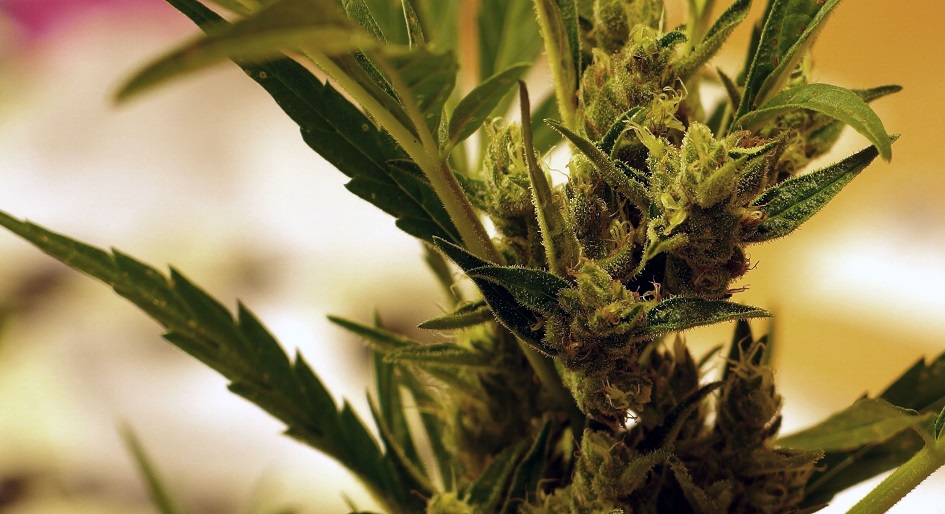It has been more than a year since the Cannabis Act came into effect, making Canada the second country, after Uruguay, to legalize the sale of both recreational and medical cannabis. Since then, the e-commerce market has gained momentum, with entrepreneurs around the world trying their hand at cannabis production and eager to send their wares through the mail, especially as storefronts in Canada have been slow to open and many others have been shuttered in the wake of COVID-19. A look at the economic forecast explains why: Financial experts agree a marijuana boom is coming, and investment advisor The Motley Fool notes that at one point annual worldwide sales were estimated to reach $50 billion or more by 2030.
The Cleaning Connection
While expectations are still high, the continued growth of the cannabis market is dependent on a key factor relatively unbeknownst to entrepreneurs: the effective cleaning and sanitation of growing facilities.
Cannabis plants are fragile and environmental conditions can impact their growth and development. For instance, if the production area is not kept clean and in a state of microbial control, it can impact employees as much as the health of the plants. Poor indoor air quality (IAQ), potentially the result of fumes from cleaning solutions or other chemicals used, can harm the plants, especially in the early stages of growth. Even if they survive in such a setting, the plants may not be as robust nor reach their full growth potential.
Effective cleaning also helps keep the growing area unattractive to insects that can destroy plants and wipe out an entire cannabis producer’s inventory.
Cross-contamination in production areas is a big concern, according to Mike Watt, director of training and new product development at Avmor, which manufactures professional cleaning solutions that can be used in cannabis-producing facilities. At greatest risk are growing rooms, packaging areas, curing/drying rooms, trimming areas, hallways/corridors near the growing areas, and worker change rooms. These spaces tend to be damp, making them the perfect environment for fungus, mould, and bacteria to grow. More thorough and effective cleaning can prevent this from occurring.
Watt says these areas must be cleaned daily to remove visible soils and then disinfected. While some growers may use Environmental Protection Agency-registered disinfectants, he recommends disinfectants that have a DIN (drug identification number) assigned by Health Canada. Located on the product label, this eight-digit number verifies the product has been evaluated, meeting Canada’s specific standards and requirements, and is authorized for sale.
Low-risk areas of cross-contamination in a cannabis facility include offices, security rooms, warehouse areas, shipping and receiving zones, kitchens, and bathrooms. Though non-production environments, they must still be cleaned daily, says Watt, because they can impact the health of plants in high-risk areas. However, they do not need to be disinfected.
“The use of sanitizers should prove sufficient, but as with disinfectants, it is important to clean the area first to remove soils,” he explains. “This improves the efficacy of both sanitizers and disinfectants.”
Watt says a cannabis facility’s sanitation program and standard operating procedures should be compliant with Health Canada’s good production practices and Access to Cannabis for Medical Purposes Regulations.
Sanitation starting points
To further ensure the health and well-being of cannabis inventory, growers need to take a number of steps before plants are even introduced to the growing area.
The entire growing environment should be swept clean and vacuumed to remove debris and dust. Particular attention should be given to vacuuming cracks and crevices on all surfaces, especially floors. This is where moisture and contaminants may hide.
Floor cleaning should always start farthest from the exit, working top-down and side to side to remove particulates. The ‘two-bucket’ or ‘three-bucket’ technique is preferred. With the two-bucket method, cleaning solution is kept in one bucket and rinse water in the other. This helps prevent the solution bucket from being contaminated. The three-bucket system uses an additional rinse bucket, which further reduces the likelihood of contamination of the solution bucket. It is also recommended to use lint-free cleaning tools or those that do not leave particulates behind.
Products should not only have a DIN but be certified to a third party environmental standard. Watt recommends researching the various standards in advance as some green certification organizations focus more on protecting the ozone layer than breathable air. Choose a product that does not contain volatile organic compounds (VOCs) to best protect IAQ.
The growing area will likely be ventilated, cooled, and heated. Since climate control is critical, ensure the HVAC system is in good working order, and the ideal temperature and humidity is properly set. With time, layers of dust can build up in the HVAC system and can negatively impact IAQ, so regular cleaning is necessary.
Another area of ongoing concern is the floors. They will inevitably become wet and may even have puddles, creating a safety hazard for workers and a breeding ground for germs, bacteria and mould that can harm the plants. Watt recommends investing in a wet/dry vacuum cleaner that will remove the moisture, as well as debris, soil, and dead plant matter from the floors. A slip resistance enhancing treatment can be applied to the floors to improve safety and reduce slip and fall injuries.
Cultivating a marketing strategy
Keeping a cannabis production facility in top condition is not only key to creating healthy plant inventory, it’s also important from a marketing perspective. Growers of cannabis often invite visitors, vendors, and potential customers to see how their facilities operate, and growing areas are a key part of the tour. A clean, healthy growing area is an indication of a safe and professionally operated facility, one that can be counted on to produce top quality plants for sale.
Robert Kravitz is a frequent writer for the professional cleaning industry.








